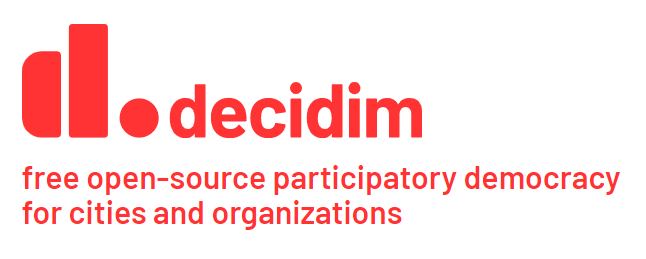The aim of the Conference on the Future of Europe is to give citizens the chance to raise their voices on how the European Union develops. It is thus only fitting that the team providing the software to facilitate this process chose the tool Decidim, which by being open source also is aimed at facilitating community involvement.
The European Union has significant challenges to address, among them “achieving the green and digital transition, while strengthening Europe’s resilience, its social contract and European industry’s competitiveness”, as the Presidents for the European Parliament and European Commission as well as the Presidency of the European Council identified in a joint declaration in March 2021. With the Conference on the Future of Europe the three European institutions want to involve citizens in finding solutions. Ursula von der Leyen, President of the European Commission said: “People need to be at the very centre of all our policies. My wish is therefore that all Europeans will actively contribute to the Conference on the Future of Europe and play a leading role in setting the European Union’s priorities.”
With 450 million citizens in the European Union, collecting, structuring and analysing input will be a challenge on its own. In the face of digitalisation and restrictions stemming from the COVID-19 epidemic, software solutions have an important role to play. To meet this challenge, the European institutions collaborated in finding and adapting the right solution to meet the needs of the Conference.
The process started in October 2019 at the European Commission’s DG Communication and eDemocracy unit at the Joint Research Centre, the European Commission's science and knowledge service. An analysis of the needs of the Conference and which tools fit those, lead to choosing the open source tool Decidim for its technical maturity, broad community and adaptability. That Decidim is open source software was not central to it being chosen, yet turned out to be an important factor in the successful creation of the Conference platform, Florin Mircea Bota from the Commission’s DG DIGIT and project manager for the project at the European Commission told OSOR.
The European institutions wanted to adapt the platform thoroughly to the needs of the Conference and thus new capabilities had to be added. According to Bota, the look and feel of the platform was adjusted by the European Parliament, while the integration of EU Login, the EU’s single-sign-on service, eTranslation, the Commission’s machine learning service to account for the multi-language EU reality, and other components such as custom maps and European Commission data were added by a dedicated team.
The Commission official noted in a proprietary product, he expects these changes “would have been implemented, but it might have been more expensive and would have taken longer”, compared to an open source solution and it “would have been much more difficult”. Decidim being open source enabled the European institutions to easier collaborate amongst themselves, but also crucially with external service providers. Using a proprietary solution would have meant the European institutions would be limited to the provider of the solution, while when using Decidim, they could “build a dedicated team just for this purpose”.

The final product was developed mostly through collaboration with the consultancy Tremend, the open source experts at Codegram and participatory democracy experts Open Source Politics, as well as the DIGIDEM Lab. In addition, contact with the Decidim community at MetaDecidim happened. This way, each part of the development team could concentrate on their strengths.
Open source realises its innovative potential from contributing back to the community and thus making improvements available for everyone. Florin Mircea Bota noted that for the European Commission as a public entity uses public money and thus “it’s fair to contribute back and support the ecosystem”. Thus, the development team has contributed back those developments not specific to the Conference on the Future of Europe on the Decidim’s Github page as a pull request, with some already integrated into the main code of Decidim. The code of the Conference platform will also be made available on a code repository soon, Bota confirmed, under the AGPL license.
It is clear using open source has helped the project move faster and reduced the resources necessary to succeed. In this vein, Bota identified the impact on how the European institutions could work with externals as a main factor. Relying on an “open outsourcing” model meant those with the relevant necessary experience could be quickly identified and engaged, creating heterogenous teams which worked on their dedicated tasks with low transaction costs, increasing the speed and quality of implementation.

